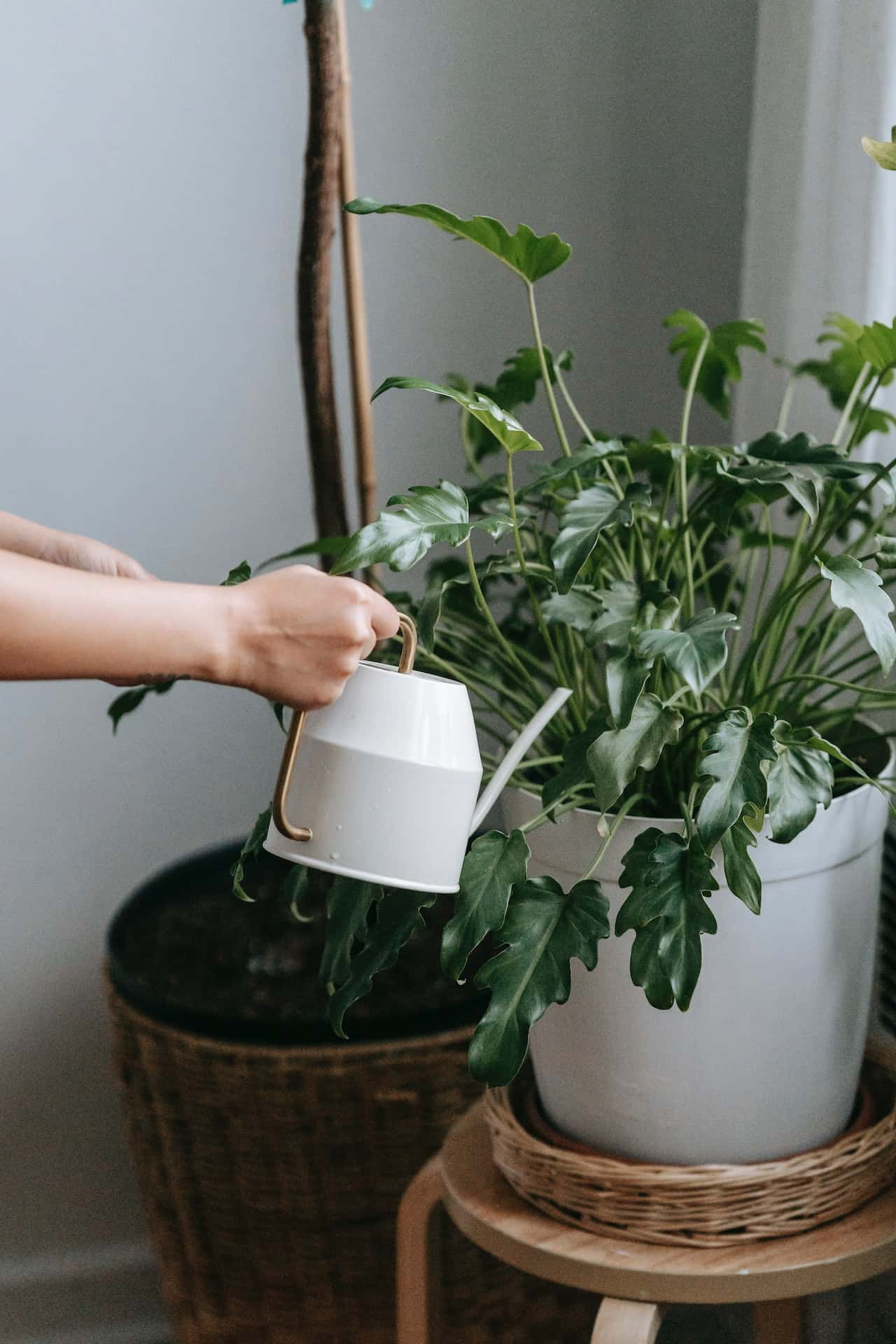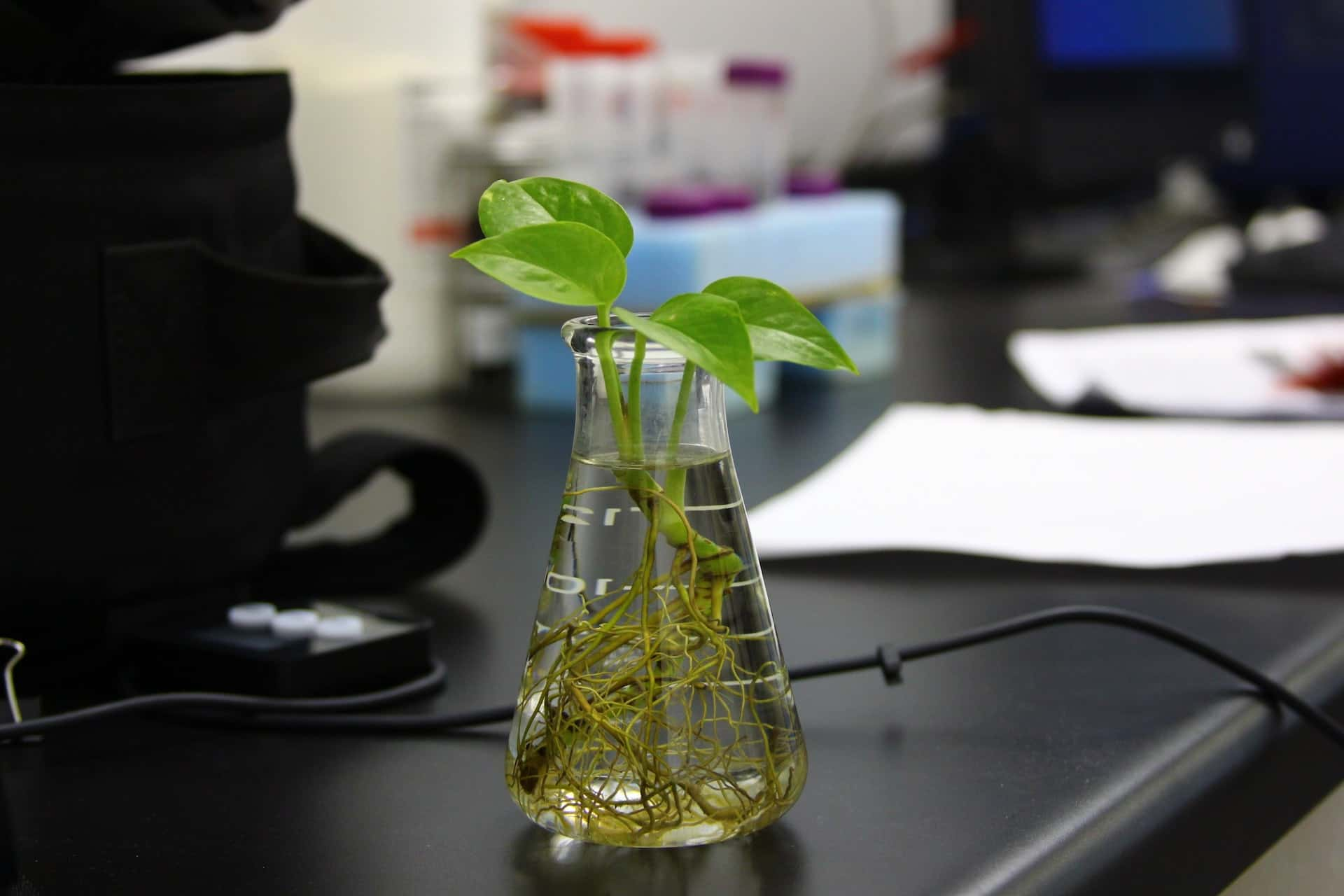Maintaining indoor plants might seem like an easy task, but anyone who has them will tell you it can actually be quite tricky. Indoor plants are not just great for decor, they also provide a lot of benefits (these indoor plants in India help purify the air, for example), so if you have decided to place a few potted greens around your house, that’s great. In this article, we’ll give you all the tips and tricks needed to maintain healthy and thriving indoor plants.

9 Tips for Watering and Maintaining Indoor Plants
1. You Can Water Plants from Above or Below, Depending on the Type
You might think that watering indoor plants is carried out from above, but you’ll see in just a bit that indoor plants can be watered from below as well. These are two indoor plant watering systems.
If you’re watering plants from above, use an indoor plant watering can to pour water on the plant from the top and let the water trickle down and wet the soil. Make sure you use water in moderation and do not completely soak the soil, as you could risk water leaking onto the floor. This works for most plants, but you might have water splashing onto the floor or staining your curtains. To avoid this, you can try watering indoor plants from below.

To water plants from below, firstly, make sure the pot has drainage holes at the bottom (or on the sides towards the lower two inches of the pot). Fill a saucer with 2 – 3 inches of water and place the potted plant on the saucer. Let the soil absorb water through the drainage holes for a couple of hours. You can then throw out any excess water that is remaining in the saucer.
To know which method is best for your indoor plants, ask the nursery when you’re purchasing the plants. Some plants wither when their leaves are watered, and for these, it’s best to water them from below.
2. How Often You Water Your Plants Is Very Important
The frequency of watering indoor plants depends on the type of plant, but there are some thumb rules that apply to all plants.

Make sure the soil and compost are not getting soggy or soaked in water. This happens if you pour too much water when watering indoor plants, or if you water the plant too often. Excess water will erode away healthy soil and compost and will also become a breeding ground for insects and parasites that are harmful to plants and people. To avoid over-soaking of soil when watering indoor plants, make sure you wait till the soil has dried (or is lightly moist) from the last watering session before you water it again. You can stick your finger in the soil to judge the level of moisture present.
So, how much water does a plant need per day? You can water plants more often in summer and spring and less in winter and monsoon. Plants usually grow more and faster in summer and spring and need more water during these seasons.
Desert plants like cacti or other plants like indoor grass require lesser water than others, so you can adjust the frequency of watering based on the plant type as well.
If there is water stagnant in the saucer on which the pot is placed, make sure you discard it after a few hours. This will prevent waterlogging and will also prevent insects like mosquitoes from using it as a breeding ground.
3. Use Pebbles to Retain Moisture
The water you pour when watering indoor plants usually flows freely through the soil and drains out through the holes in the pot. This is usually why you’ll notice the soil drying up quickly and your plants needing water more frequently.

One way of retaining moisture and delaying soil from drying when watering indoor plants is by using pebbles. Place a few pebbles on the top of the soil and then pour water over the pebbles. These pebbles will act like a barrier, like a natural water regulator. They will allow water to seep in and moisten the soil slowly and help retain moisture.
4. Find Out What Type of Water Your Plants Need
For some plants, tap water will suffice, while others will only thrive on distilled water. Tap water is further divided into soft and hard water; each has different effects on the soil.

For the most part, tap water works just fine for watering indoor plants. If you live in a place where water is not treated before it is ready for use, you probably have what is called hard water. Hard water has calcium and magnesium carbonate salts in it. These salts could affect the ph of the soil and, depending on the plant and compost, damage the plant. On the other hand, soft water generally contains sodium chloride that can solidify and collect in the soil. So which one is better for watering indoor plants? Well, both are alright as long as you are using them in moderation, but hard water is generally better.
If you’re not sure of the quality of water you get from the tap, you can use distilled water for watering indoor plants. It helps to do some research before you start watering the pants to know what type of water is best suited for them.
5. Maintain a Moderate Temperature

You might be wondering if you should use cold water or hot water when watering indoor plants. Well, both extremes are bad, and what you should be doing is using water which is at room temperature.
If you live in extremely cold regions and the tap water is very cold, you can consider warming it up a bit before watering indoor plants. Water at extreme temperatures could harm the roots of the plants.
6. Watering Indoor Plants When You’re on a Holiday

Your indoor plants can survive without water for a couple of days, maybe up to a week. If you are going on a vacation for more than a week, however, you will need to think of ways to ensure your plants are getting the water they need.
The simplest way is to ask someone to take over the task of watering indoor plants for you, but what do you do if that’s not an option? Well, we have got 3 tricks to help you out.
The first idea for watering indoor plants when you’re away is to use a piece of garden twine as a water dispenser. Place a water reservoir (a bucket of water) at a height above the plants. Soak a few pieces of garden twine and then dip one end of it in the reservoir and place the other end in the pot. As long as the reservoir is higher than the pots, the water will slowly drip from the bucket into the pots.
The second idea is to use a damp towel to provide moisture. Dampen a towel by dipping it in water and wringing it. Place the pot (with drainage holes at the bottom) on a saucer and wrap the damp towel around the base. You can surround the outer side of the towel with water. Moisture from the towel will be slowly absorbed by the soil, and at the same time, water from the outside pool will continue to dampen the towel.
The final tip for watering indoor plants when you’re on holiday is to use self-watering pots. You can buy pots that release stored water at a particular time interval, just like sprinklers. These might be a bit costly, but they are great for people who take regular vacations.
7. Caring for Indoor Water Plants
There are certain plants that are indoor water plants for home – plants whose roots can be fully submerged in water and don’t need soil for nutrition. An indoor plant that grows in water is generally housed in bottles and not in pots. These plants don’t need watering per se, but you do need to replace the water in the bottle once every couple of days.

Most water plants need their water to be replaced every 4 to 5 days. If the leaves of the plants are turning yellow, you are not changing the water regularly enough.
8. Know Your Indoor Plants
A common mistake people make is to assume all plants are the same, and so they also assume one maintenance strategy fits all. This is very wrong and could end up harming your indoor plants.
For example, some plants absorb water through aerial roots and some through their leaves. Plants like orchids and areca palms are good examples. For these plants, along with watering the soil and compost, you also need to moisten their leaves and stems to ensure they get adequate moisture. Plants like cacti prefer dry soil, and these plants don’t need regular watering. So on.

Unless you know your plants well, you will not know exactly what type of care they need. Fortunately, you can get a lot of information through the nursery or on the internet. Learn about the plants you buy, and you’ll be able to care for them well.
9. Use the Right Pots
This one’s not directly a tip for watering indoor plants, but the type of pot you use will affect the amount of water that is retained, so it will affect your plant. Most nurseries sell plants in what is called a grower pot. These are great for small buds and for transporting plants, but once you get the plant home, transfer it to a proper-sized pot made of the right material.

Also, place a saucer below the pot to ensure your tiles or the surface on which the pot is placed do not get damaged or stained.
Final Word
So there you have it, tips to ensuring your indoor plants stay healthy and thrive. Gardening is a calming and relaxing activity, and as it happens to most people with a green thumb, you will very quickly find yourself with an entire litter of plants.

Taking care of indoor plants is not really a chore but a hobby. With these tips, we’re sure you will be successful. Check out HomeLane’s design journal for more tips on maintaining healthy indoor plants.
FAQs
1. What Time of Day Should You Water Indoor Plants?
Morning is the best time to water indoor plants.
2. How Long Can Indoor Plants Go without Water?
Most indoor plants can go up to 7 days without water. Some plants (like cacti) can go longer, while others need more frequent watering.
3. Should You Water Indoor Plants Every Day?
No, you should not because soil retains moisture for more than a day and watering indoor plants every day will result in soggy soil. If you live in an extremely hot area and the soil dries up quickly (within a few hours), you can consider watering indoor plants daily.
4. How Often Should Indoor Plants Be Watered?
You should just make sure to not leave the soil soggy. If the soil dries up very quickly (maybe because you live in a region that is very hot), you can consider watering your plants daily. This rarely happens with indoor plants; however, you can water your plants once every few days.
5. What Is the Best Indoor Plant Watering Solution?
Watering from the bottom keeps the soil uniformly moist and retains moisture for a longer period. Watering from the top helps wash away any solidified minerals and salts. Since both methods have their benefits, you should ideally do both.
6. Why Do the Tips of Indoor Plants Turn Brown?
The tips of plants turn brown when they are exposed to much fertilizer. You should use fertilizer in moderate amounts and replenish it once every few months. Brown tips are dead, so you can use a scissor and clip the brown tips of plants. They will grow healthily after that.




